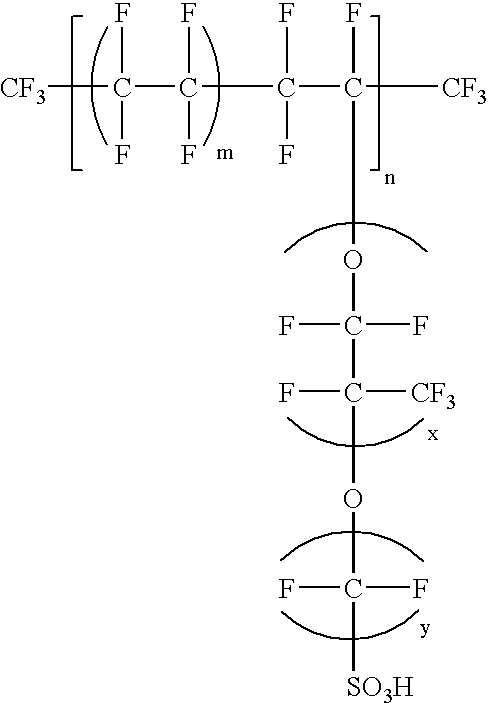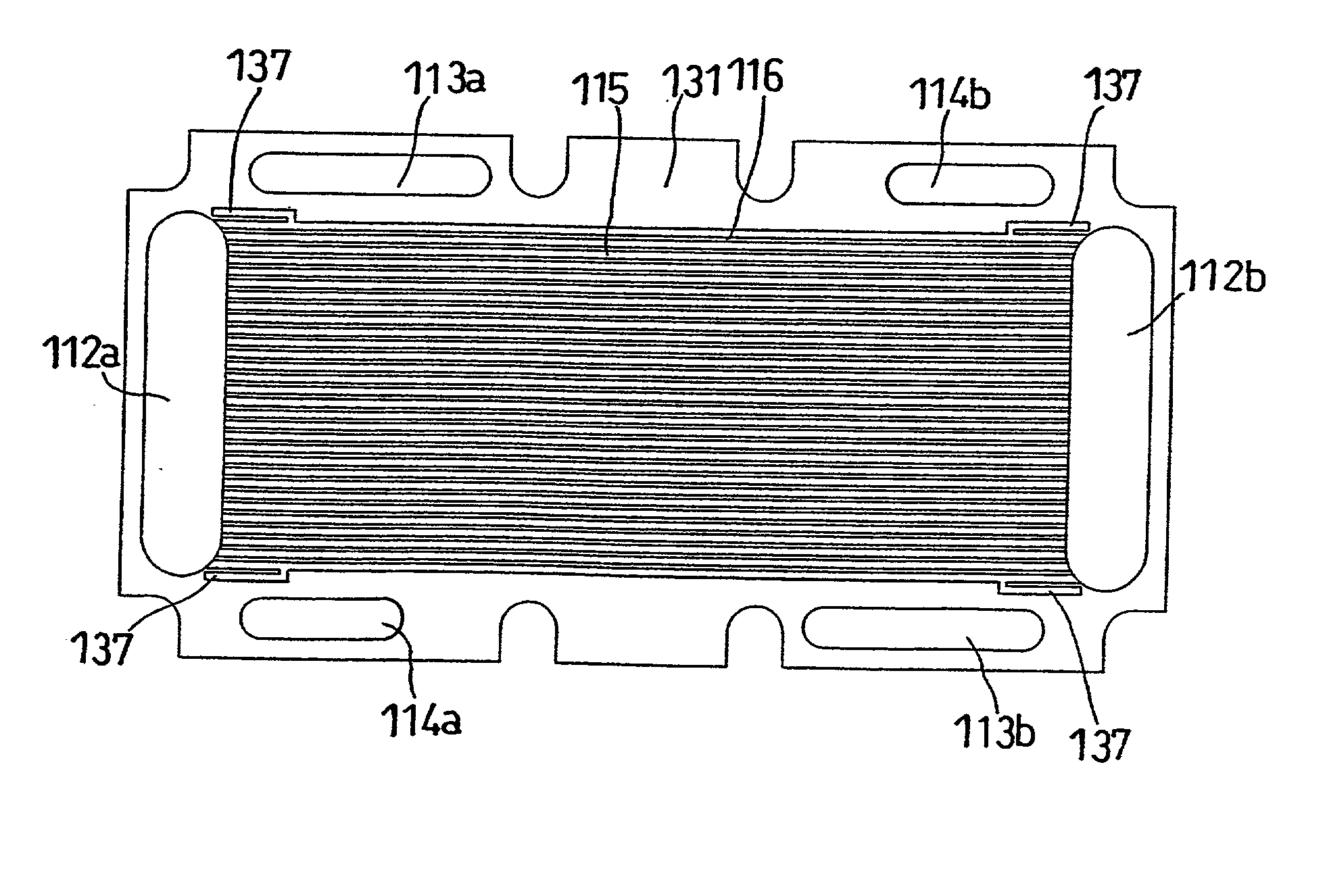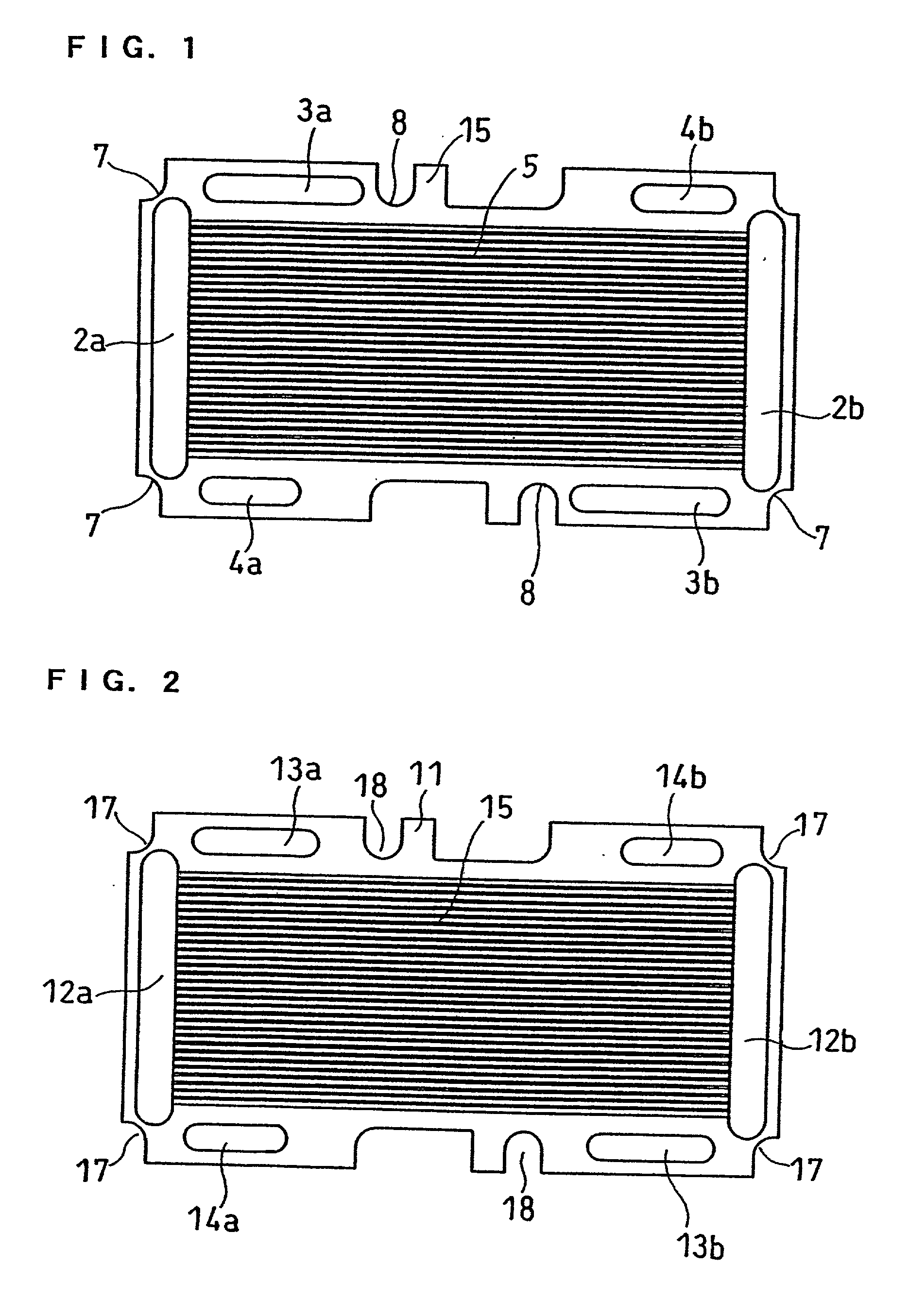Polymer electrolyte fuel cell
a fuel cell and electrolyte technology, applied in the field of polymer electrolyte fuel cells, can solve the problems of remarkably worsening the distribution to the respective separator plates, difficult to check the surface and rear face of the separator plate, and difficult to achieve the adequate ratio of the opening area of each manifold aperture to the total sectional area of each flow channel
- Summary
- Abstract
- Description
- Claims
- Application Information
AI Technical Summary
Benefits of technology
Problems solved by technology
Method used
Image
Examples
embodiment 1
[0075] The structure of a separator plate included in a polymer electrolyte fuel cell of one embodiment is illustrated in FIG. 1. FIG. 1 is a front view showing a separator plate seen from a cathode side.
[0076] This separator plate 1 is, for example, a machined rectangular glassy carbon plate, and has a pair of manifold apertures 2a and 2b for an oxidant gas arranged on short sides thereof, as well as a pair of manifold apertures 3a and 3b for cooling water and a pair of manifold apertures 4a and 4b for a fuel gas arranged on longitudinal sides thereof. The manifold apertures 2a, 3a, 4a are formed at different sides. The manifold apertures 2b, 3b, and 4b are also formed at different sides. The cooling water manifold apertures 3a and 3b are respectively arranged opposite to the fuel gas manifold apertures 4a and 4b. One manifold aperture in each pair is an inlet, and the other is an outlet. For example, the manifold apertures 2a, 3a, and 4b are inlets, whereas the manifold apertures ...
embodiment 2
[0081] The structure of a separator plate included in a polymer electrolyte fuel cell of another embodiment is illustrated in FIG. 2.
[0082] FIG. 2 is a front view showing a separator plate seen from the cathode side.
[0083] This separator plate 11 is, for example, a machined rectangular glassy carbon plate, and has a pair of manifold apertures 12a and 12b for the oxidant gas arranged on short sides thereof, as well as a pair of manifold apertures 13a and 13b for cooling water and a pair of manifold apertures 14a and 14b for the fuel gas arranged on longitudinal sides thereof. The manifold apertures 12a , 13a , 14a are formed at different sides. The manifold apertures 12b , 13b , and 14b are also formed at different sides. The cooling water manifold apertures 13a and 13b are respectively arranged opposite to the fuel gas manifold apertures 14a and 14b. Unlike Embodiment 1, the opening areas of the three types of manifold apertures, the oxidant gas manifold aperture, the fuel gas manif...
embodiment 3
[0090] FIG. 4 is a front view illustrating a separator plate in still another embodiment seen from the cathode side.
[0091] This separator plate 31 has a pair of manifold apertures 32a and 32b for the oxidant gas arranged on short sides thereof, as well as a pair of manifold apertures 33a and 33b for cooling water and a pair of manifold apertures 34a and 34b for the fuel gas arranged on longitudinal sides thereof. The manifold apertures 32a, 33a, 34a are formed at different sides. The manifold apertures 32b, 33b, and 34b are also formed at different sides. The cooling water manifold apertures 33a and 33b are respectively arranged opposite to the fuel gas manifold apertures 34a and 34b. Like Embodiment 1, the opening areas of the three types of manifold apertures, the oxidant gas manifold aperture, the cooling water manifold aperture, and the fuel gas manifold aperture, decrease in this order. A plurality of straight grooves are formed as a gas flow channel 35 to connect the oxidant g...
PUM
 Login to View More
Login to View More Abstract
Description
Claims
Application Information
 Login to View More
Login to View More - R&D
- Intellectual Property
- Life Sciences
- Materials
- Tech Scout
- Unparalleled Data Quality
- Higher Quality Content
- 60% Fewer Hallucinations
Browse by: Latest US Patents, China's latest patents, Technical Efficacy Thesaurus, Application Domain, Technology Topic, Popular Technical Reports.
© 2025 PatSnap. All rights reserved.Legal|Privacy policy|Modern Slavery Act Transparency Statement|Sitemap|About US| Contact US: help@patsnap.com



